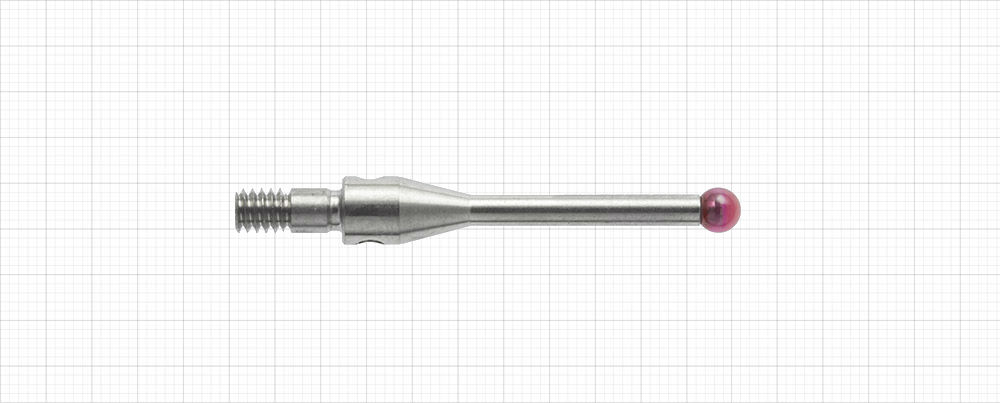When using a ball probe on a stylus, the choice of material for the stylus and ball you are using has everything to do with the amount of measurement precision you will achieve. Depending on the job at hand, you will want to utilize a specific stylus design paired with a particular type of ball. There are a number of advantages that are gained when you decide to use a ruby ball probe, and we would like to outline those for you today.
To start with the basics, the stylus tip is the device used to take the measurement when you are using a probe. It is the part of the tool that takes the actual measurement. Nowadays, there are numerous probe designs. Understanding the build of your probe has a lot to do with understanding the properties of what you are measuring. Anyone in the field of metrology knows that accuracy is everything. Accuracy starts with a full comprehension of the tools used on the object being measured. The stem on a probe might be made of steel, tungsten carbide, ceramic, carbon fiber, aluminum, or titanium. The ball on the end of the stem can be made of ruby, zirconia, tungsten carbide, ceramic carbide, or silicon nitride. The top choice in the industry, a ruby ball probe is the optimum choice of material.
The industry standard, a ruby ball probe is used for most measurement applications. The ruby on a ball probe is made of pure aluminum oxide. These probe balls are both exceptionally smooth and impressively hard. Ruby comes with the major advantage of high compressive strength paired with high resistance to abrasion. The precise sphericity of the ruby also plays into its measurement accuracy. Any amount of deviation in sphericity when using a ball probe can lead to a large amount of error in the resulting measurement. The strength and resistance of ruby helps to guarantee that your ball probe can withstand more challenging measurements. These major advantages of the ruby material are what make it go above and beyond, proven to be more reliable than other potential material options.
It is important to note that there are two specific conditions in which choosing a material other than ruby for your ball probe tip would be advantageous. When conducting heavy duty scanning on aluminum, adhesive wear occurs. This means that there is build-up of the aluminum on the ball tip on the probe that occurs due to the chemical attraction between ruby and aluminum. When measuring under these circumstances, silicon nitride is a better choice. The second exception to choosing ruby happens when conducting scanning on cast iron. This circumstance can lead to abrasive wear, where small scratches are caused on the ball tip which would impact the sphericity. Under these conditions, zirconia is the material to choose for your ball probe tip.
When considering a ball probe, you will want to address the bending of the stylus, the thermal stability of the whole device, the sphericity of the ball, and the material the ball is made of. While there are a lot of little choices to make in this process, one feature can be known for sure—the ruby ball probe is almost always the best choice you can make for the highest amount of precision in your measurement.

